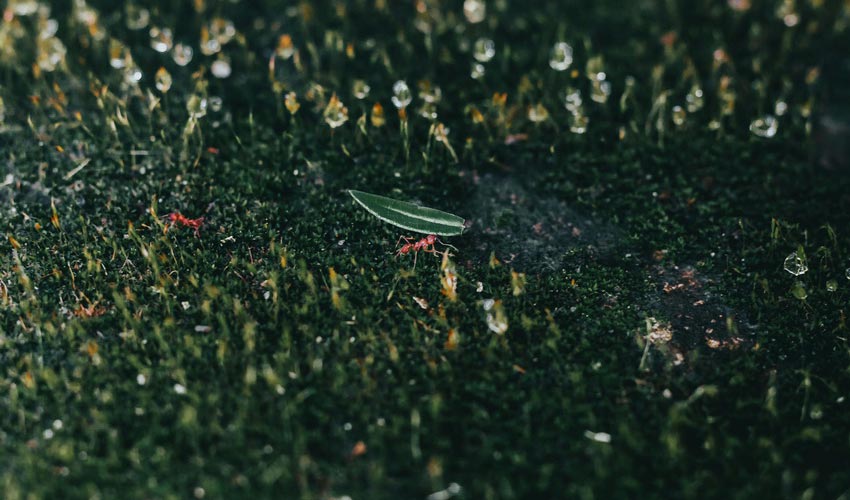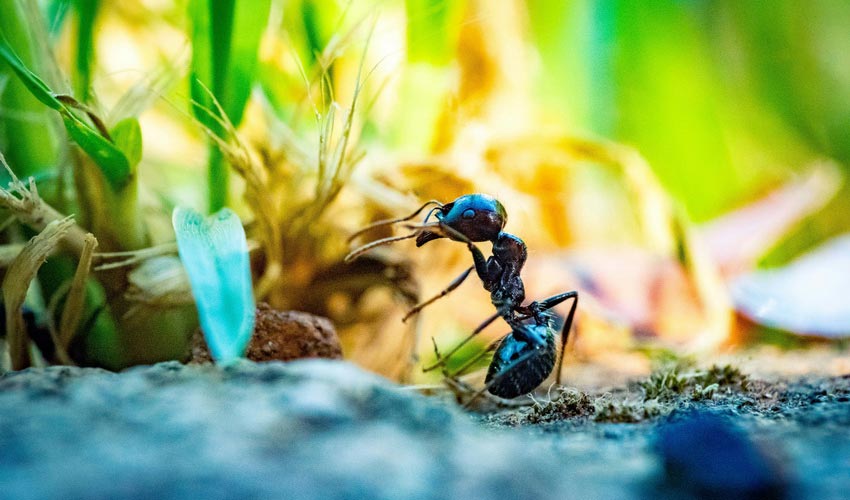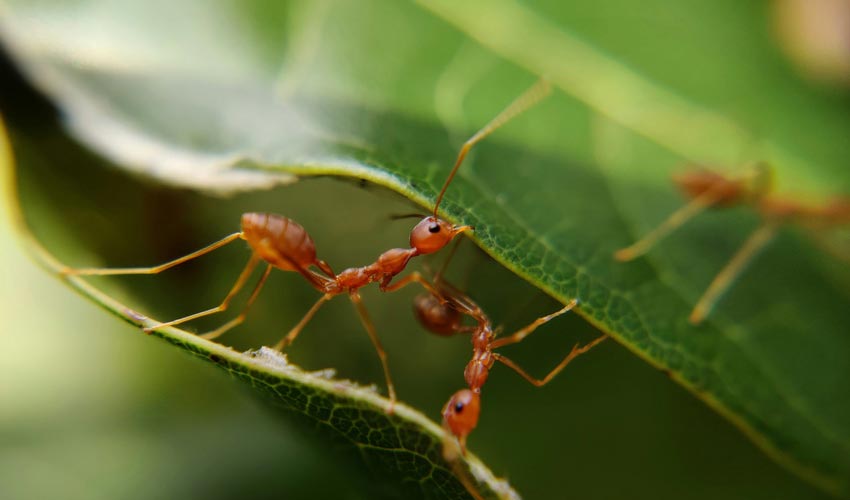Ants in Florida Perform Life-Saving Surgery on Their Peers
Ever since I was a young child, I have been utterly captivated by the intricate and fascinating world of ants. I remember spending countless hours observing them as they diligently marched in single file, carrying tiny pieces of leaves back to their colony. To my young mind, the ant colony was like a bustling mini society, complete with a hierarchy, tasks, and a sophisticated communication system. The more I watched, the more I became enchanted by their teamwork, organisation, and sheer industriousness. It was as though I was peering into a completely different world, one that was both mysterious and endlessly intriguing. My fascination with ants has only grown with time, and to this day, I still find myself drawn to studying and learning about these incredible creatures and the fascinating societies they create.
Prepare to be astonished as I unveil a ground-breaking study that delves into the astonishing abilities of ants to perform life-saving operations! This is not a work of fiction or fantasy, but a genuine exploration of the remarkable skills possessed by these tiny creatures. Let me enlighten you on the fascinating findings of this research. Scientific researchers recently made an amazing discovery regarding the caregiving habits of Florida carpenter ants. These remarkable insects have been found to perform life-saving surgery on their fellow colony members, making them one of only two known species in the world to exhibit this behaviour, the other being….humans.

The study revealed that when a Florida carpenter ant detects a nest mate with a limb injury, they immediately spring into action. The ants meticulously examine the wound before deciding on the best course of action - whether it be cleaning the wound or amputating the affected limb. This level of care and precision in their medical intervention is truly remarkable. This newfound insight into the behaviour of Florida carpenter ants sheds light on the complex social structures and advanced communication systems within ant colonies. The ants' ability to recognise and respond to injuries in their fellow colony members demonstrates a high level of empathy and cooperation within their society.
According to study author Erik Frank, a behavioural ecologist at the University of Würzburg in Germany, instances of amputation behaviour are extremely rare in the animal kingdom, with the African ant species Megaponera analis being the only known case of systematic amputation by one member of a species on another. In 2023, Frank and his team made a pioneering discovery: these ants are able to effectively treat infected wounds in their fellow nest mates using an antimicrobial substance secreted from their glands. This unique ability sets them apart from Florida carpenter ants, which do not possess the same glandular capabilities. Curious about how the Florida carpenter ants manage wound care within their colony, the team embarked on a study to unravel the mysteries of their healing process.
Researchers focused on two specific types of injuries - lacerations on the femur (thigh) and the tibia - the team observed a remarkable display of medical prowess in the ant world. Their experiments revealed a clear difference in the treatment approach for these two types of wounds. For femur injuries, the ants engaged in a meticulous process of wound cleaning with their mouths, followed by the precise amputation of the damaged leg through repeated biting. On the other hand, tibia wounds were simply cleaned, without the need for amputation. The results of these surgical interventions were nothing short of astonishing. Survival rates for ants with femur injuries soared from less than 40% to an impressive 90-95% following amputations, showcasing the incredible effectiveness of this treatment strategy. Similarly, tibia injury survival rates saw a dramatic improvement from a meagre 15% to a remarkable 75% after undergoing the cleaning process.

Scientists have discovered that ants have developed remarkable healing strategies that not only enhance our understanding of ant biology but also have the potential to revolutionise wound care practices in the future. One of the most intriguing findings from the study is that ants seem to have a unique approach to treating injuries. For example, researchers have observed that ants only amputate femur injuries rather than all leg injuries, which they believe is due to speed limitations. The process of amputation can take these tiny creatures at least 40 minutes to complete. By studying micro-CT scans of the ants, scientists have theorised that damage to the blood-pumping muscles in the femur causes a slowdown in blood circulation. This delay allows the ants enough time to amputate the limb before the bacteria-laden blood can enter the body, potentially preventing the spread of infection.
On the other hand, ant tibias have less muscle tissue, making it easier for infections to spread quickly. In these cases, amputation would take too long for the ants to effectively stop the spread of harmful bacteria. Instead, the ants focus on cleaning the wound to prevent further infection. Lead researcher Frank emphasised that ants have a remarkable ability to diagnose wounds, distinguish between infected and sterile wounds, and administer treatment over extended periods of time with the help of their colony members. This unique medical system within ant colonies bears similarities to the complex healthcare systems in human societies.
The findings from this research highlight the extraordinary capabilities of ants and their intricate mechanisms for caring for injured members within their nests. By gaining insight into these healing strategies, scientists are not only expanding their knowledge of ant behaviour but also laying the groundwork for potential innovations in wound care that could be inspired by these tiny, resilient insects. It appears that ants have much more to teach us than we ever could have imagined!
So, now we know that ants possess a natural ability to identify and treat wounds selectively, without the need for any prior learning. This innate skill is fascinating and sheds light on the sophisticated behaviour of these tiny creatures. The scientists are now expanding their studies to include other ant species that lack special antimicrobial glands, in order to determine if this surgical talent is present across different types of ants. This research opens up a world of possibilities in understanding the remarkable capabilities of ants and their potential for treating injuries.

The Healing Power of Ants in Indigenous Communities
Ants, tiny creatures that we often overlook in our daily lives, have a surprisingly important role in the world of primitive societies when it comes to healing wounds. Talking about natural health! These industrious insects have been used for centuries by various indigenous communities as a natural and effective way to stitch and disinfect wounds. One of the most well-known ways ants are used in wound care is by the Sateré-Mawé people of Brazil. Known for their traditional knowledge of medicinal plants and natural remedies, the Sateré-Mawé have been using ants for generations to close open wounds. The ants they use, known as the siafu or bullet ant, have powerful jaws that can hold the edges of a wound together while it heals. The Sateré-Mawé let the ants bite their wound, and then they break off the body, leaving the head as a makeshift staple.
Not only are these ants used to stitch wounds, but they also have powerful antibacterial properties that help disinfect the wound and prevent infection. The venom of the siafu ant contains powerful proteins that have been found to have antibiotic properties, making them an effective natural remedy for healing wounds. In addition to the Sateré-Mawé, other primitive societies around the world have also used ants for wound care. The Maasai people of East Africa, for example, have long used the venom of the siafu ant to treat snake bites and other injuries. The San Bushmen of Southern Africa have also used ants as a form of sutures, relying on their natural abilities to help wounds heal.
While using ants to stitch and disinfect wounds may seem like a primitive practice, it has stood the test of time and continues to be a valuable resource for many indigenous communities. The antibacterial properties of ants, along with their ability to hold wounds together, make them a surprisingly effective and natural solution for treating injuries in areas where modern medical supplies may be scarce.
In a world where modern medicine often dominates the conversation around healthcare, it is important to remember the wisdom and ingenuity of primitive societies who have long relied on the natural world for their healing practices. The use of ants in wound care is just one example of how traditional knowledge and natural remedies can offer effective solutions to common health issues. So the next time you see an ant crawling across the ground, remember that these tiny insects have a hidden talent for healing that has been celebrated by many cultures throughout history.

The Ant Colony – A Fascinating Social Structure
So, have you, like me, ever stopped to marvel at the incredible abilities of ants? These little guys work together in a highly organised and efficient manner to build elaborate colonies and accomplish extraordinary feats. Let's delve deeper into the fascinating world of ant colonies and explore the intricate workings of their society. You probably would not expect it but ant colonies are some of the most intricate and fascinating social structures in the animal kingdom. These complex societies are made up of thousands or even millions of individuals working together for the good of the colony as a whole.
At the heart of every ant colony is the queen, the sole reproductive member of the colony. Her main job is to lay eggs, ensuring the continued survival and growth of the colony. The queen is typically much larger than the other ants in the colony and is often protected by her workers at all costs. Workers are sterile female ants that perform various tasks to keep the colony running smoothly. Some workers are responsible for foraging for food, while others take care of the queen's eggs and larvae. There are also worker ants that defend the colony from predators and other threats.
One of the key aspects of ant colonies is their highly organised social structure. Within the colony, ants communicate with each other using scent trails, pheromones, and even physical gestures. This allows them to coordinate their activities and work together efficiently. Ants also exhibit a division of labour, with different workers specialising in different tasks. Ant colonies are incredibly efficient at resource management. For example, when foraging for food, ants will often follow scent trails laid down by other workers to quickly find and retrieve food sources. They also have sophisticated ways of storing and preserving food, such as regurgitating nectar into the mouths of other workers to share the food resources.
Another fascinating aspect of ant colonies is their ability to adapt and respond to changing environmental conditions. For example, when a colony's food source is depleted, workers will quickly relocate the nest to a new location with better resources. Ant colonies are also known to engage in complex behaviours such as warfare with rival colonies or forming symbiotic relationships with other species. In conclusion, ant colonies are marvels of cooperation and organisation in the natural world. Their intricate social structures, division of labour, and efficient resource management make them highly successful at surviving and thriving in a variety of environments. Studying ant colonies can provide valuable insights into complex social systems and help us better understand the fascinating world of insects.
''When many work together for a goal, Great things may be accomplished. It is said a lion cub was killed by a single colony of ants.'' - Saskya Pandita






















